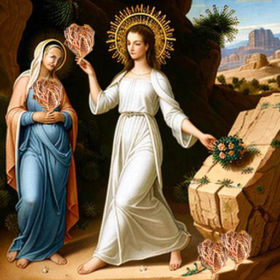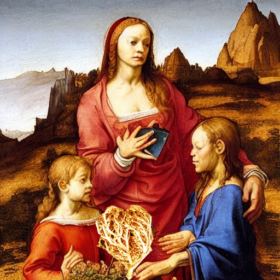ROSE OF JERICHO
The Rose of Jericho in Christian Tradition
The Rose of Jericho, scientifically known as Anastatica hierochuntica, is a remarkable plant that holds profound religious significance in Christianity. Originating from the arid regions of the Middle East, Israel. this resilient plant has become a powerful symbol of spiritual renewal, resurrection, and the enduring nature of faith in Christian tradition.
Biblical References
Rose of Jericho in the Bible
The Rose of Jericho derives its name from the biblical city of Jericho, mentioned prominently in the Old and New Testaments. The most notable reference is found in the Book of Joshua, where the walls of Jericho miraculously crumble after the Israelites, led by Joshua, encircle the city for seven days. This event marked a significant moment in biblical history and set the stage for the spiritual symbolism associated with the Rose of Jericho.
Resurrection Symbolism
The Rose of Jericho is renowned for its remarkable ability to withstand extreme conditions, appearing to wither and die in the absence of water, only to resurrect when exposed to moisture. This inherent resilience has led to the plant being seen as a metaphor for resurrection and renewal, drawing a parallel to the biblical narrative of Christ’s resurrection after three days in the tomb.
Liturgical Use and Symbolism
Liturgical Practices
In some Christian traditions, the Rose of Jericho is incorporated into liturgical practices, particularly during the season of Lent and Easter. The plant’s ability to seemingly come back to life after appearing dead serves as a poignant reminder of the Easter story, symbolizing the triumph of life over death.
Lenten Reflection
During Lent, a period of reflection, penance, and preparation leading up to Easter, the Rose of Jericho is often used as a visual aid in churches and homes. Its cyclical nature mirrors the spiritual journey of Christians during this season—moments of introspection, repentance, and ultimately, the joy of resurrection.
Religious Rituals and Traditions
Blessings and Prayers
The Rose of Jericho is sometimes used in religious rituals where it is blessed by clergy and incorporated into prayers for healing, renewal, and spiritual growth. The act of placing the withered plant in water, watching it come to life, becomes a powerful symbol of faith and the transformative nature of divine intervention.
Symbol of Perseverance
The plant’s ability to survive in harsh conditions, appearing desiccated and lifeless only to revive with the touch of water, has led to the Rose of Jericho being seen as a symbol of perseverance in the face of adversity. This resonates deeply with Christian teachings of enduring faith, even in the most challenging circumstances.
Cultural Significance Beyond Christianity
Interfaith Symbolism
While the Rose of Jericho holds a special place in Christian tradition, its symbolism has transcended religious boundaries. Many cultures and faiths recognize the plant as a symbol of rebirth, renewal, and resilience, making it a unifying emblem that speaks to the universal human experience.
Environmental and Conservation Ethics
The Rose of Jericho’s ability to survive in harsh environments has also sparked interest in environmental and conservation discussions. The plant serves as a reminder of the delicate balance between nature and human impact, urging individuals to appreciate and protect the resilience inherent in the natural world.
The Rose of Jericho, with its deep-rooted connection to biblical narratives and Christian traditions, stands as a living testament to the enduring power of faith, resurrection, and spiritual renewal. Its symbolism extends beyond religious confines, resonating with individuals across cultures who find inspiration in the plant’s ability to thrive in adversity. As the Rose of Jericho continues to capture hearts and minds, it serves as a timeless reminder that even in the harshest conditions, the human spirit—and faith—can experience a resurrection of its own.



